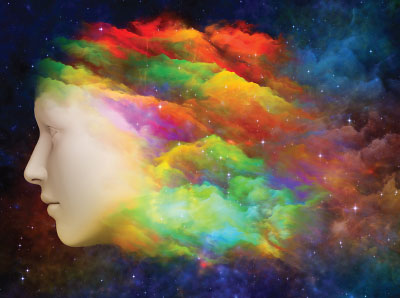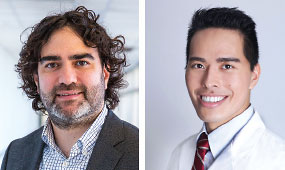Demystifying Psychedelic Treatments in Psychiatry: Is Ego Dissolution the Solution?
Abstract
A growing body of research suggests that psychedelic compounds may be useful for treating patients with certain disorders.

As highlighted by several sessions at the APA Annual meeting, there’s a growing renewed interest in psychedelics, which are compounds that induce changes in thought, perception, and mood, in the clinical and research communities. Classic psychedelics refer to a subset whose mind-manifesting and hallucinogenic effects are primarily mediated by the serotonin receptor, 5HT2A: tryptamines (for example, LSD, psilocybin, DMT, and 5-MeO-DMT), and phenethylamines (for example, MDMA and mescaline). While demonstrating empathogenic effects, such as emotional openness and increased relatedness, MDMA is sometimes excluded from this category due to its limited hallucinogenic effects.
Despite varying pharmacological profiles, all classic psychedelics can induce a sense of “tripping” and mystical feelings—ineffable oneness with the universe, blurring of boundaries between self and the world, and loosening of rigid thoughts. Reported long-term effects can include positive changes in personality and attitudes such as increased openness, optimism, mindfulness, and improved social cognition. Some neurobiological studies indicate that psychedelics may place the brain in a more plastic and high-entropy state, which may disrupt rigid emotional and cognitive processes. Furthermore, disruptions in thalamocortical and default mode network connectivity are posited to alleviate ruminative thinking and overreliance on prior distorted beliefs characteristic of neurotic disorders. In clinical populations, antidepressant effects have been correlated with increased ego dissolution, mystical experiences, and “normalization” of putative biomarkers of pathological states.
While promising in their potential therapeutic application, classic psychedelics have significant adverse effects, such as increased anxiety, altered mental status, dysregulation, and/or persistent psychosis in vulnerable populations. Moreover, LSD and psilocybin are agonists at the 5HT2B receptors, which are associated with valvular heart diseases. Lastly, prospective long-term safety data are still lacking.
Historical Context of Research
For thousands of years, psychedelics have been used for religious, ceremonial, or medicinal purposes. In 1896, Arthur Heffter successfully synthesized a classic psychedelic—mescaline (naturally occurring in peyote), which was subsequently studied in Emil Kraepelin’s clinic as a psychotomimetic agent. In 1936, Swiss chemist Albert Hoffman synthesized LSD, which galvanized researchers to investigate therapeutic uses ranging from treatment of alcoholism to depression. As psychedelics spread outside of scientific circles in the 1960s, a cultural backlash led to increased regulation; the subsequent federal Controlled Substances Act passed in 1970 halted clinical research for decades. Renewed interest in the 1990s led to a new wave with more rigorous methodologies investigating multiple indications—treatment-resistant depression, existential distress in terminal illness, posttraumatic stress disorder (PTSD), obsessive-compulsive disorder, body dysmorphic disorder, eating disorders, alcohol use disorder, smoking cessation, autism spectrum disorder, and cluster/migraine headaches.
New Era of Research
Most psychedelic studies are currently funded by small pharmaceuticals or foundations. The National Institute of Mental Health held its first psychedelics workshop in January. The studies typically include intensive psychotherapy protocols with preparatory sessions, supportive therapy during dosing, and integrative sessions.
Schedule of Sessions on Psychedelics
SUNDAY, MAY 22
10:30 a.m.-Noon
Psychedelics: Therapeutic Mechanisms
1:30 p.m.-3 p.m.
Psychedelics in Psychiatry: Past, Present, and Pressing Issues
TUESDAY, MAY 24
8 a.m.-9:30 a.m.
Treating Substance Use Disorders With Classical Psychedelics
WEDNESDAY, MAY 25
10:30 a.m.-Noon
The Psychedelic Revolution in Psychiatry
While there is no FDA-approved classic psychedelic, psilocybin and MDMA have received “breakthrough therapy” FDA designations for depression and PTSD, respectively. A phase 3 trial of MDMA-assisted therapy for PTSD in 90 participants published May 10, 2021, in Nature Medicine yielded a large effect size of 0.91 on the primary outcome (CAPS-5 score), which was a considerably larger effect size than the standard pharmacological treatments. In a phase 2b trial of psilocybin-assisted therapy in 233 participants with treatment-resistant depression, Compass Pathways reported significant reduction in depressive symptomatology (MADRS score) in the highest dose group (25 mg) compared with the control low-dose group (1 mg) even at 12-week follow-up. Compass plans to begin a phase 3 trial this year.
Current limitations of psychedelic research include concerns of representativeness and generalizability, as most participants are self-selected prior users and predominantly consist of White, educated, high socioeconomic status populations. Furthermore, participants with comorbidities or vulnerability to psychosis are often excluded. High expectancy, nocebo effects, and poor blinding may also limit interpretability of findings.
Revisiting Ego Dissolution
Surprisingly, there is no definitive proof that the ego dissolution (for example, conscious hallucinogenic experience) is necessary or sufficient for therapeutic effects. In rodents, studies using 5HT2A blockers or pharmaceutically designed nonhallucinogenic analogs demonstrate antidepressant effects despite reductions in psychedelic-induced head-twitch responses. The analogous study has not been done in humans, but similar findings in humans could have profound implications on treatment protocols: If therapeutic effects are independent of “tripping,” many existing safety and study design barriers could be circumvented. As larger trials attempt to establish efficacy, a pressing question with implications for assisted-therapy protocols, safety, and accessibility of treatment remains unanswered: Is ego dissolution the solution? ■
“MDMA-Assisted Therapy for Severe PTSD: A Randomized, Double-Blind, Placebo-Controlled Phase 3 Study” is posted here.




